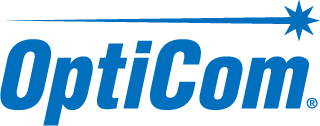Check Point Certified Security Administrator R81.20 (CCSA)
Kursa garums
3 dienas
Norises vieta un nosacījumi
Virtuālā klase, ENG
Mācību mērķi
Apstipriniet savu izpratni un prasmes, kas nepieciešamas, lai konfigurētu un optimāli pārvaldītu Check Point nākamās paaudzes ugunsmūrus. CCSA R81.20 apmācība ir pamatkurss katram administratoram, kas strādā ar Check Point risinājumiem, izmantojot R81.20 operētājsistēmu.
Programma
• Describe the primary components of a Check Point Three-Tier Architecture and explain how they work together in the Check Point environment.
• Explain how communication is secured and how traffic is routed in the Check Point environment.
• Describe the basic functions of the Gaia operating system.
• Identify the basic workflow to install Security Management Server and Security Gateway for a single-domain solution.
• Create SmartConsole objects that correspond to the organization’s topology for use in policies and rules.
• Identify the tools available to manage Check Point licenses and contracts, including their purpose and use.
• Identify features and capabilities that enhance the configuration and management of the Security Policy.
• Explain how policy layers affect traffic inspection.
• Articulate how Network Address Translation affects traffic.
• Describe how to configure manual and automatic Network Address Translation (NAT).
• Demonstrate an understanding of Application Control & URL Filtering and Autonomous Threat Prevention capabilities and how to configure these solutions to meet an organization’s security requirements.
• Articulate how pre-shared keys and certificates can be configured to authenticate with third party and externally managed VPN Gateways.
• Describe how to analyze and interpret VPN tunnel traffic.
• Configure logging parameters.
• Use predefined and custom queries to filter log results.
• Identify how to monitor the health of supported Check Point hardware using the Gaia Portal and the command line.
• Describe the different methods for backing up Check Point system information and discuss best practices and recommendations for each method.
• Explain how communication is secured and how traffic is routed in the Check Point environment.
• Describe the basic functions of the Gaia operating system.
• Identify the basic workflow to install Security Management Server and Security Gateway for a single-domain solution.
• Create SmartConsole objects that correspond to the organization’s topology for use in policies and rules.
• Identify the tools available to manage Check Point licenses and contracts, including their purpose and use.
• Identify features and capabilities that enhance the configuration and management of the Security Policy.
• Explain how policy layers affect traffic inspection.
• Articulate how Network Address Translation affects traffic.
• Describe how to configure manual and automatic Network Address Translation (NAT).
• Demonstrate an understanding of Application Control & URL Filtering and Autonomous Threat Prevention capabilities and how to configure these solutions to meet an organization’s security requirements.
• Articulate how pre-shared keys and certificates can be configured to authenticate with third party and externally managed VPN Gateways.
• Describe how to analyze and interpret VPN tunnel traffic.
• Configure logging parameters.
• Use predefined and custom queries to filter log results.
• Identify how to monitor the health of supported Check Point hardware using the Gaia Portal and the command line.
• Describe the different methods for backing up Check Point system information and discuss best practices and recommendations for each method.
• Security Management
• SmartConsole
• Deployment
• Object Management
• Licenses and Contracts
• Policy Rule and Rulebase
• Policy Packages
• Policy Layers
• Traffic Inspection
• Network Address Translation
• Application Control
• URL Filtering
• Logging Snapshots
• Backup and Restore
• Gaia
• Permissions
• Policy Installation
EXERCISES
• Deploying SmartConsole
• Installing a Security Management Server
• Installing a Security Gateway
• Configuring Objects in SmartConsole
• Establishing Secure Internal Communication
• Managing Administrator Access
• Managing Licenses
• Creating a Security Policy
• Configuring Order Layers
• Configuring a Shared Inline Layer
• Configuring NAT
• Integrating Security with a Unified Policy
• Elevating Security with Autonomous Threat Prevention
• Configuring a Locally Managed Site-to-Site VPN
• Elevating Traffic View
• Monitoring System States
• Maintaining the Security Environmen
• SmartConsole
• Deployment
• Object Management
• Licenses and Contracts
• Policy Rule and Rulebase
• Policy Packages
• Policy Layers
• Traffic Inspection
• Network Address Translation
• Application Control
• URL Filtering
• Logging Snapshots
• Backup and Restore
• Gaia
• Permissions
• Policy Installation
EXERCISES
• Deploying SmartConsole
• Installing a Security Management Server
• Installing a Security Gateway
• Configuring Objects in SmartConsole
• Establishing Secure Internal Communication
• Managing Administrator Access
• Managing Licenses
• Creating a Security Policy
• Configuring Order Layers
• Configuring a Shared Inline Layer
• Configuring NAT
• Integrating Security with a Unified Policy
• Elevating Security with Autonomous Threat Prevention
• Configuring a Locally Managed Site-to-Site VPN
• Elevating Traffic View
• Monitoring System States
• Maintaining the Security Environmen

Mērķauditorija
Technical professionals who support, install deploy or administer Check Point products.

Priekšnosacījumi
Working knowledge of Unix-like and Windows operating systems and TCP/IP Networking.

Sertifikāts
Prepare for exam #156-215.81.20 VUE.com/checkpoint

Pasniedzējs
Authorized Check Point Software Technologies Ltd. Trainer.
Pieteikties konsultācijai un sīkākas informācijas saņemšanai
+371 67 331 878 Šī e-pasta adrese ir aizsargāta no mēstuļu robotiem. Pārlūkprogrammai ir jābūt ieslēgtam JavaScript atbalstam, lai varētu to apskatīt.





